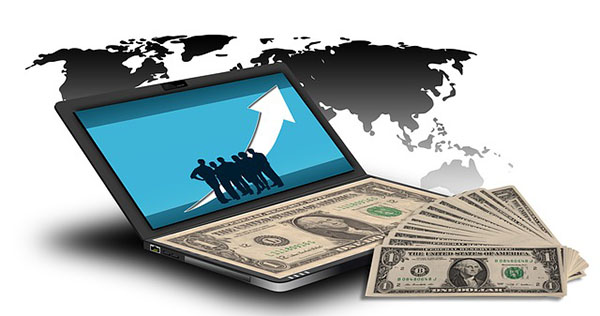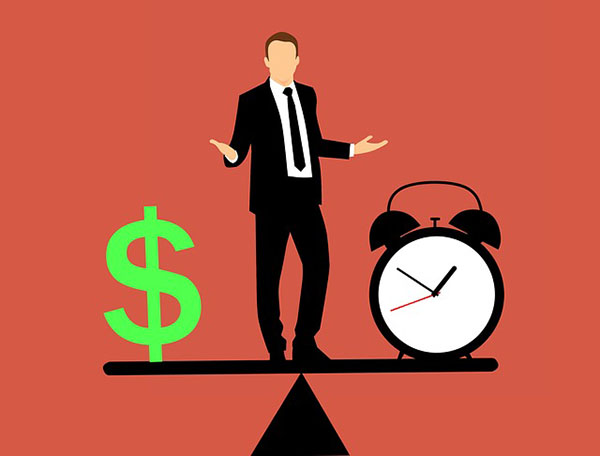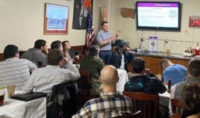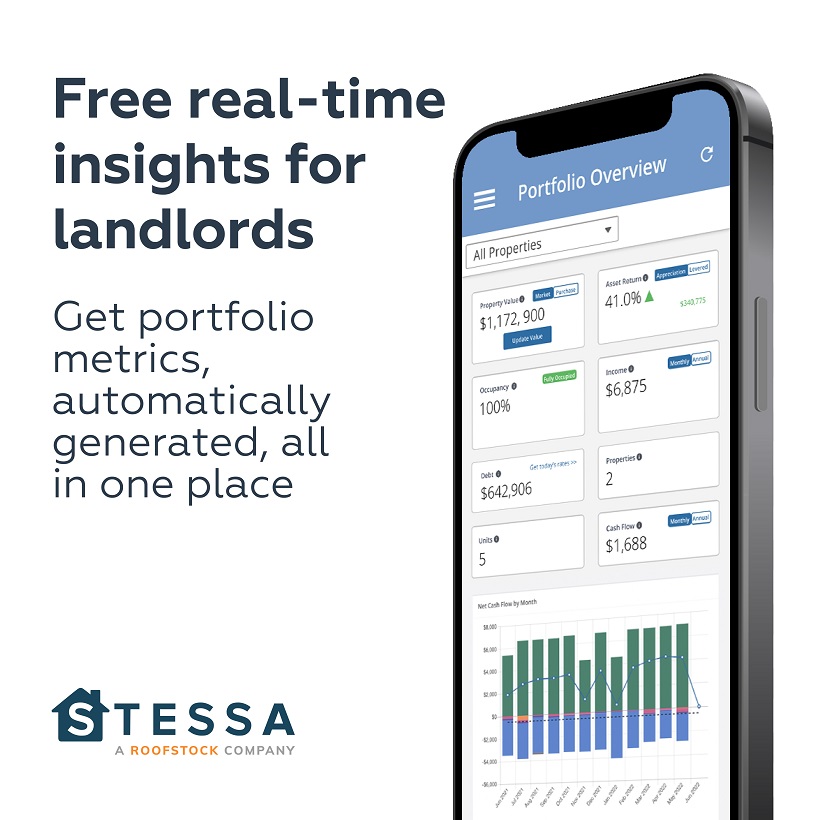Investing in gold or silver is one of the ways to diversify outside of the US dollar. Lior Gantz, the CEO and Founder of Wealth Research Group, talks about holding precious metals as investments. At 32, Lior became a millionaire without having any formal education, and he’s done that through starting and investing in businesses. He explains why we need to consider precious metals as part of our portfolio and highlights the purchasing power of the odd currencies. Listen in and discover how you can diversify your investments, produce cashflow, and protect your assets in spite of economic changes.
—
Producing Cashflow And Protecting Your Assets Through Diversifying Your Investments with Lior Gantz
Our guest is Lior Gantz. His father went bankrupt three times by the time Lior was 22. At 32, he became a millionaire without going to any formal education and he’s done that through starting and investing in businesses. His story includes failing and recovering seven days of effort for many years, books that he read to guide the way, approach to global investing and traveling 365 days a year with his family and so much more. He has a global approach to life and business and that’s where the name of his business originates from.
Over the past eighteen years, he has built, run and managed various exciting ventures across two continents. With his Wealth Research Group, Lior provides a glimpse into his inner thoughts and his work processes so loyal members get to grow and expand their financial expertise along with him. His drive to consistently outperform the markets with an elevated degree of safety on one end and his commitment to seek out and find the most explosive under the radar opportunities on the other end will be clear to you with every word you read of what he writes and spells out. Lior, thank you for joining our team and joining our tribe.
Thanks for having me.
You write about a number of different asset types and something we haven’t touched on this show yet with any other guests are precious metals. I own a little bit of gold myself. Why should someone in my position or perhaps in the audience’s position consider having precious metals as a part of their portfolio?
When I started investing, I was sixteen. At thirteen, I started having jobs because I wanted things and my parents couldn’t afford things, so I started working. I painted decks, I babysat and I coached basketball for the kids in the neighborhood to the small ones and whatever I can do. I saved up $20,000 and I thought to myself, “What do I do with this? It can’t just sit there.” I asked the banker, “What do you do with the money?” He says, “You need to invest. You put it in mutual funds.” He’s a banker so he gives me his sales pitch. I say, “What do I need to do to get going?” He says, “Get your parents to sign a waiver and you can manage this account on your own.” That’s what I did. The first book I ever read about the investment that my grandfather gave me was a book by Warren Buffett. Every chance he gets, he bashes gold. He talks about the fact that gold is not cashflowing investment. If you put an ounce in your pocket, it will be an ounce 70 years from now. It doesn’t grow and it’s not dynamic. It’s not a vibrant business and therefore, it’s not a wealth creator and that is so true, but you don’t need to compare gold with real estate, with dividend stocks or with anything that generates cashflow or that grows.
Gold and silver are forms of very liquid cash because you can liquidate your gold or silver holdings at any time. Click To TweetThe apples to apple comparison are with fiat currencies, with your savings. For example, if you want to look at Warren Buffett, if he would’ve taken Berkshire’s cash on hand and instead of holding $100 billion in cash, he would have allocated 5% to 10% out of it into holding it in precious metals. That money would have compounded better in terms of the purchasing power for Berkshire shareholders in the past years than being in cash. In other words, from the year 2000, if you look at the price of gold, it’s $250 an ounce and now it’s going to be less or more by the time this gets released. The idea is simple. Gold and silver are forms of very liquid cash. You can liquidate your gold or silver holdings at any time. They’re not to be mistaken with wealth-creating opportunities because they’re not. They’re a way to diversify out of fiat currencies and keep some of your savings in other forms of assets.
In terms of emergencies and in times of real crisis, in economies like Venezuela or what we’ve seen in Turkey or in other countries over the past several years, for people who have held their savings and gold not in their local currency over there, that thing has been a lifesaver. The purchasing power of their currencies has gone down substantially. It wears two hats on a regular basis. In a place like America where you haven’t seen rampant inflation except for the 1970s. You haven’t seen as a general problem. Holding gold is simply a way to diversify a little bit outside of the US Dollar and have your savings in some other form. If you are an international investor and you want exposure to other markets, then having gold in those other markets will help you in terms of purchasing power. In Turkey right now, you can buy prime real estate in Istanbul, one of the most touristic cities in the world. If you have held your Turkish liras, if you’ve converted them to gold, then you can buy more real estate right now and convert it back and buy cashflowing asset than people that have saved their money inside of banks.
I’m not saying you have to have everything outside of the bank and put it into gold, but there is a place for it. That’s where the idea comes from. In general, what I do is I take 24 months of living expenses and I converted them to gold and silver. In other words, I took my lifestyle burn rate and I converted it into two years’ worth of expenses and put that in gold and silver storage. If I want to speculate and say, “The price is going to go higher for some reason,” I can do that but at least I know aside from everything that I have that as a cushion and that’s where my mindset is at. I know you have a very sophisticated audience, you can go to WealthResearchGroup.com/GoldPlaybook. We wrote the most extensive gold stocks manual online that I’m aware of. It’s in two parts and you can access it and get a good idea of how this industry works.
I liked that you brought up the purchasing power of fiat currencies. It reminds me of a meme that I saw for the first time. It’s a picture of Ben Bernanke and it reads, “What has less value than a penny? That same penny tomorrow.” It’s not the copper and the penny, but the fiat currencies that all of us hold in one form or another. Whether it’s the US Dollars or the Turkish lira, they’re all massively depreciating assets. It’s not that they don’t produce cashflow, but there’s constantly more supply. That’s what central banks exist to do. They pump cash into the system, inflate the currency and reduce the purchasing power of the dollar or whatever your fiat currency of choice might be.
If you look at the US federal government as a corporation and not a government, its expenses exceed its income. Therefore, in the last few years, it’s in a deficit and it’s creating mountains of debt. As opposed to a corporation that in order to pay off the debt, it must do something creative and generate more income than outgoing expenses. They need to cut the expenses at some point, otherwise, the creditors won’t lend that money. The United States government has an exit strategy, which is different. They can monetize debt by approaching the central bank and the central bank can issue new currency in order to buy more debt from the US government.

This would be the same as you coming to me and saying, “Lior, I need $1 million.” I would say, “Create a bond that says that you owe me $1 million. I’ll create $1 million and then I’ll give them to you and you’ll give me the bond.” That is how exceptional and unique the Central Bank of America is because it can do that. Not only can it do that, but the government can sell this bond to foreign investors. This is unique and it has given the US the power to continue to mount up that no other country can sustain. No other country can live with a $22 trillion federal debt and a $1 trillion a year federal deficit.
At one point or another, you’re going to see a situation where the US Dollar will have some event where the paradigm shifts around it and its value will go down substantially. The reason is that all countries are using the US Dollar as a reserve currency. Six out of every ten currency units in the world are US Dollars. That’s 60% of the world’s currency that’s US Dollars. It has a demand that is artificial because other countries are using it as a form of international settlement, but there are alternatives to that in the future. This could be twenty years ahead. This is not an imminent immediate event, but it could be five years away. You just don’t know and that is why you need some protection.
In terms of a monetary system, we have had these changes in the reserve currency of the world every 70 years, give or take. An economy or country enjoys a prosperity period, a huge boom and its currency are being relied on for international affairs. You saw that with Portugal, Netherlands, France and with Great Britain. After World War II, this has been the US Dollar. Obviously, the world didn’t accept US Dollars the way we did now back then. In 1944, the nations met in order to create a new currency system and they backed the dollar with gold. $35 were worth one ounce and that was a constant ratio. In other words, if the US needed to create more currency, it needed to own more gold at the same time to retain this exchange ratio of 35:1.
They went out to war in Korea and they went out to war in Vietnam and other countries were beginning to become suspicious of how much gold is there to back the dollars and could it be that it’s not 35:1 anymore? Has Washington diluted the power of the dollar without telling anyone? Especially Charles de Gaulle, who was the President of France in the late ‘60s was saying, “I want an audit. I want to see how much gold you have and let’s compare that to the amount of dollars and see if that’s 35:1.” Nixon, instead of doing the audit, he said, “Let’s temporarily create a situation where gold is not tied to the dollar.” That was on the 15th of August 1971. It’s called the Nixon shock or the closing of the gold window.
From there on, all currencies are essentially not backed by any tangible asset. You can redeem them for any tangible thing. They have a changing and a flowing liquid value as compared to other things and that has allowed governments to get into debt because they create more and more of it. By law, we are obligated to accept it. It has the network effect, which in real life, if someone who come from out of space and received this dollar, he would say, “What do I do with this piece of paper? Why does a $50 have any other significance than a $100? Who said so?” This is the paradox that we live in terms of fiat currencies.
Investing in yourself is the best investment you could ever make. Click To TweetIt doesn’t mean that this will have to end tomorrow but having a plan B in case of the US Dollar going down by 20% or 30% would be very detrimental to your purchasing power. You should think about ways of protecting yourself. Gold would be one of these, but a real estate has been a very good inflation hedge. Some particular dividend companies are very good hedges because they can raise prices on their products to meet inflation. In other words, if you remember the price of a can of coke back in the ‘80s, it’s not the price now and still no one has said, “That’s too expensive for a piece of coke. I’m going to change my beverages.” Some companies are able to keep raising prices on consumers without losing what they have. Those companies are also very good inflation hedges.
Long-term real estate has proven to be one of the best wealth creation and preservation devices out there for hundreds of years. It’s created more millionaires and billionaires than anything else. I agree that real estate should be a big part of our holdings, properly, acquired real estate, but real estate nonetheless. Lior, what is the best investment you’ve ever made?
One is real life investment and the other one is a sophisticated answer to your question. I started reading a lot of books and I realized that there’s a lot of wealth and a lot of great information in the bookstore for next to nothing in terms of the price. I became a very avid reader very early on. By the time I was nineteen or twenty, I’ve read hundreds of books about investments and entrepreneurship and I think that helped me to take my life in a different direction. That can happen to anyone. I read three to four hours a day for the first four years that I read. I read about 6,000 hours’ worth of wealth material in between the years of when I was sixteen and twenty. That continued throughout my twenties and I sacrificed a lot of other things. If you read three or four hours a day, that means you’re not doing other stuff.
This is one of the things that’s important to understand with regards to this day’s America in particular, the US enjoyed this very big boom after World War II because the rest of the world was decimated and the US wasn’t. The rest of the world was turning to the US as a manufacturing hub, as a service hub and as everything. This was the only game in town. This is not the world right now. The future for America’s middle class and for their upper class and lower classes is not guaranteed at all. The infrastructure in the US and the business environment is the best. In terms of where the mother lode is, the US is it, but it doesn’t mean that the money will be spread across the citizenry in an equal way.
You can see very much what this day’s America would be like by looking at Amazon, where the founder is worth $140 billion in twenty years’ time and the minimum wage was raised to $15 an hour. This is where America is going. America is a very specialized economy and you’re going to see people popping up as billionaires and multimillionaires, but you’re going to see a huge demographic group that is minimum wage unless they change their future and that has to sink in. The sacrifices that need to be made in order to make big money are enormous. It’s something that the audience should pay attention to. The fact that it’s going to take a huge sacrifice to become rich, but the opportunity now to make money is better than at any other point in history. It’s all there. The opportunities are incredible, but it takes enormous effort and it’s almost endless.

That’s a big part of investing in yourself, which is what is the best investments I ever made? The answer is investing in myself in a way that’s non-compromising and just a lot of hours. In my case, I came from a house where my father went bankrupt three times in business and I still decided to go into business. That took a lot of brainwashing to wash my head out of negative ideas and put other constructive ones in my head in order to make this work. It didn’t work in the beginning. I’ve had failed businesses in my life. That’s a sophisticated answer. In terms of the best material investment that I ever made, I’ve invested in companies that have gone up to 20 and 30 folds. I’ve invested in cryptocurrencies in 2017, Wealth Research Group, the free financial newsletter. It’s the company that I run and I published information. We covered cryptocurrencies very early on.
To give you an example, we covered a coin name Ethereum, which is the second largest coin in the world when it was $12. In six months, it was over $1,000. A lot of subscribers that bought it made 90 times their money and we did that with Monero, Dash and Litecoin. A lot of all these small coins that became big opportunities, that’s what’s unique about Wealth Research Group newsletter is I share my own ideas in the letter. It’s not just generic and current events and news, it’s also specific opportunities that I have. Every two months, I release my own portfolio, what I’m doing with it and what’s going on in terms of my own life. It’s a way for me to transfer my mind into the page.
What is the worst investment you’ve ever made?
I’ve had investments go to zero. The biggest obstacle at investing is what’s called a permanent loss. There are many companies that you would buy and that you would invest in and the day you bought them is not the day that buyers and sellers decided would be the lowest point. Every second investment that I’ve ever made, the price I paid was not the lowest price. You can go back and look at the portfolio for twenty years and you would see like, “He bought Procter & Gamble for $60 and then went down to $54. It’s now $90.” There’s a period for almost any investment that you make where it would be down and that’s fine. That’s part of investing because what you are doing as an investor is not trying to find the bottom, but you’re trying to find value. If there’s a situation where you found value and then another seller has decided to be rational and sell something of value for a very cheap price, you have a situation where you can buy more of that. That’s called position sizing and dollar cost averaging.
You can decide on the amount of money that you want to put into a given investment and then split that into three or four increments and allow time to work in your favor. If the stock goes up, what you do is you don’t invest the amount that you set up to do. You put less into it than you originally thought, but the price has gone up. On the flip side, you can have a stock keep going down and you can buy more and more of it. The idea of buying a stock is to own that business. You want to own more and more of that business because you believe that there’s real value in that over the long-term. The price will come back because there’s value. What you don’t want is what’s called the permanent loss, which is a situation where a company had a lot of its future writing on one event. If that event did not transpire, there is no value in the company or there’s very little value in the company. If that event happened, that would be a game changer.
The biggest obstacle at investing is what's called a permanent loss. Click To TweetIn these situations where it’s real big speculation, that’s something that I also do with the portfolio because you can see some game-changing returns that can hamper your portfolio. What you do to mitigate that is you only put 1% of your net worth in such an idea so that if you’re not careful and it goes to zero, you still lose $1 out of every $100 that you’re worth. That is something that you’re willing to take a chance on because on the flip side, that company could have turned into a ten bagger which is a company that goes up 1,000% and that $1 would be turned into $10. That risk-reward ratio is something that I’m willing to do when I find something that’s very compelling. I’ve had situations where the companies lost 60% or 70% of the initial investment. That can happen when you speculate in small caps.
If you are going to speculate and you look at a portfolio that’s worth $1 million. You put $10,000 into something and it goes to $5,000 and you sell on the loss, then you lost $5,000 out of a $1 million portfolio. It doesn’t create a situation where you have any catastrophic losses. It doesn’t change your lifestyle and it doesn’t change your psyche. It doesn’t leave residue in there that’s a mental scar. That’s important to remember. On the flip side, if you do two, three, five or six of these and this happens to you, then you shouldn’t be in the small-cap sector. If you do ten of them and one does that and the rest are big winners, that’s the price you pay for speculating. Overall, that portfolio has gone up big time.
It’s important to look at this in the bigger picture. If you are able to find management teams and find leaders of small companies and you find them before their growth curve is going exponential, you’ve got a great strategy there. If you put $1,000 into each or $10,000 into each and you have six of them and five of them go up to double, you have five of them going from $50 to $100,000 and one losing $5,000, overall and you’re up to $95,000 which is incredible. You’ve got to remember that you’re not going to have a perfect batting average, but you don’t need to have that if you have one company to go out such and such percent and the other ones you hit your stock loss.
What is the most important lesson you’ve learned about investing?
In order to make it in investments, you have to find a little nook or a little niche that you can specialize in and forget about everything else. If you’re John and you’re an expert on real estate in this neighborhood, just stick in that neighborhood. You don’t need to find opportunities somewhere else. There’s enough opportunity in your own neighborhood or in your own city that you don’t need to get exotic. If you go to WealthResearchGroup.com/Top, you will find a wealth library of download reports that we’ve created over the years on many topics that are very important for investors and that is the key. If you can find one spot in the economy where you can excel, you don’t need anything else. You don’t need to be a generalist, who knows a little bit about everything. You could be a specialist. If you are a busy professional, I don’t think there’s anything wrong with putting your investment portfolio in the S&P 500 or in the Dow Jones long-term.

For 90% of the people, doing that is the rational thing to do. The S&P 500 has a return of 7.6% a year going back to its inception. Going back to 1812, putting $1 in American businesses would be worth over $700,000 now. Putting $1 and to T-bonds or loaning the government money would be worth about $60,000. Putting that same dollar in gold would be worth about $4. That’s the enormous power of the enterprise system in America, of America’s ability to grow more and more businesses and entrepreneurs, the size of Apple, Amazon and Google and the rest of the big ones. We’re talking about a machine that has created so much wealth. Even if you do not become an expert on stocks or in real estate, the general economy is so good that you can double your money in about every eight years just by buying an index fund.
The most important lesson is to understand that investments are secondary in life to your main career. If you have $10,000 to $20,000 and that doubles every eight years, that is not a lot of money. In the bigger picture, the $20,000 will become $40,000 and then $80,000 or $160,000. By the time you retired, you’ll have a much less than $1 million if you start with $10,000. The idea is to have more initial money coming in and that’s where investing in yourself and making yourself a more skillful person and more valuable person to your employer or in your business is the number one thing. That’s the most important thing that you can do.
You are raising that top line revenue on your personal balance sheet, bringing more money in by investing in yourself and making yourself more valuable. You’ve mentioned the resources that you offer, what is the best way for people to get in touch with you and follow-up?
The newsletter is simply my way of sharing exactly what’s going on with my own life, with my own investments and with everything that’s going on to the general economy. If you hit the website and you go to the homepage and you subscribed to the newsletter, you’re getting the best way to get into my mind. That’s what Wealth Research is all about. When I started the newsletter, the idea was like, “There’s so much lack of financial education out there.” I don’t know if it’s deliberate or not. Many people think that the government is trying to keep people away from financial education on purpose, but who knows? The bottom line is most people could use a lot of financial education, but since they’re busy and they have their own lives and all that stuff, what the newsletter does is it encapsulates ideas that I spent hours, days, weeks and months looking at into articles that are published three times a week.
It’s a great resource and everyone should check it out and look you up online. For everyone out there, I hope you learned a lot and I hope you’ll follow-up with Lior and sign up for his newsletter. If you’re enjoying the show, please subscribe. If you know anyone in your life that could use this advice as far as opportunities to grow their wealth, grow their income and live life on their own terms, please bring them in. Share a link with them, send them the blog and bring them into the fold. Until next time. I hope you enjoyed the show. Have a good one.
Important Links:
- Lior Gantz
- Wealth Research Group
- WealthResearchGroup.com/GoldPlaybook
- WealthResearchGroup.com/Top
- https://www.WealthResearchGroup.com/
- https://www.YouTube.com/channel/UC01vpJsPMseEtuNiiWHRtug/featured
About Lior Gantz

Lior is a wealth of knowledge in creating and sustaining a successful business. He became a millionaire in his 20’s and has unique grasp cryptocurrencies, the blockchain, the markets, investing, generating wealth, creating cash flow assets, how to set up a guaranteed retirement, and is an early adopter in the cannabis space.
Lior has been nicknamed “Globeionaire” by millionaire entrepreneurs, investors, and businessmen who have seen him in action. He has a global approach to life and business, and that’s where the name originates from. Over the past 18 years, Lior has built, run, and managed various exciting ventures across 2 continents. With Wealth Research Group, Lior provides a glimpse into his inner thoughts and work processes, so loyal members get to grow and expand their financial expertise along with him. His drive to consistently outperform the markets with an elevated degree of safety on one end and his commitment to seek out and find the most explosive “under the radar” opportunities on the other end will be clear to you with every word you read.
In 2009, Lior Gantz was one of the first to pioneer the Vacant House Strategy, which works in ALL markets – sellers and buyers. By 2013, his business was in 5 large metro areas. His strategy still works like a charm today.
Lior Gantz’s newsletter, Wealth Research Group, was the FIRST in the world to cover Ethereum in March of 2017 for $12. It then rallied over 8,573% by September of that year. Lior called the rally of Ripple (XRP) an hour before it occured. When he highlighted it, the coin was $0.27. Thirty days later, it was above $3.00!




